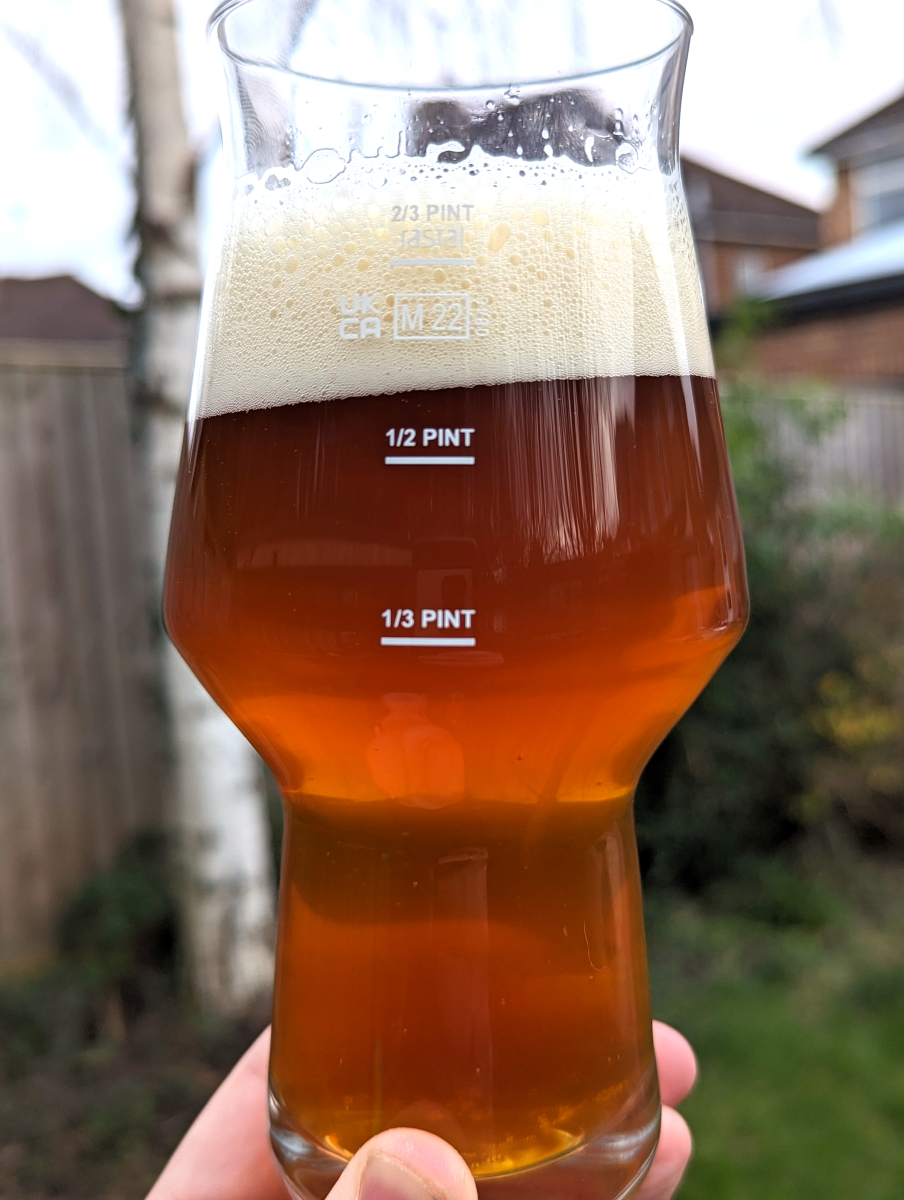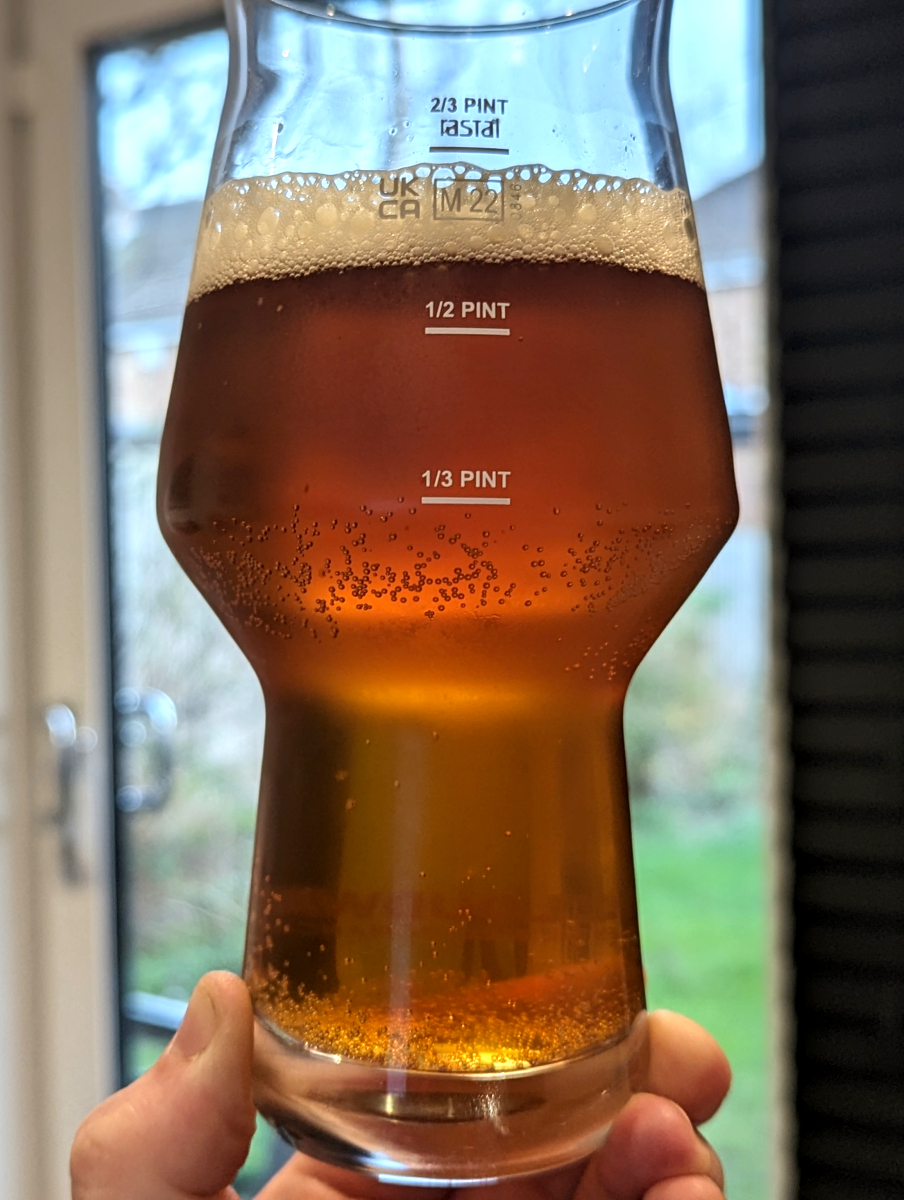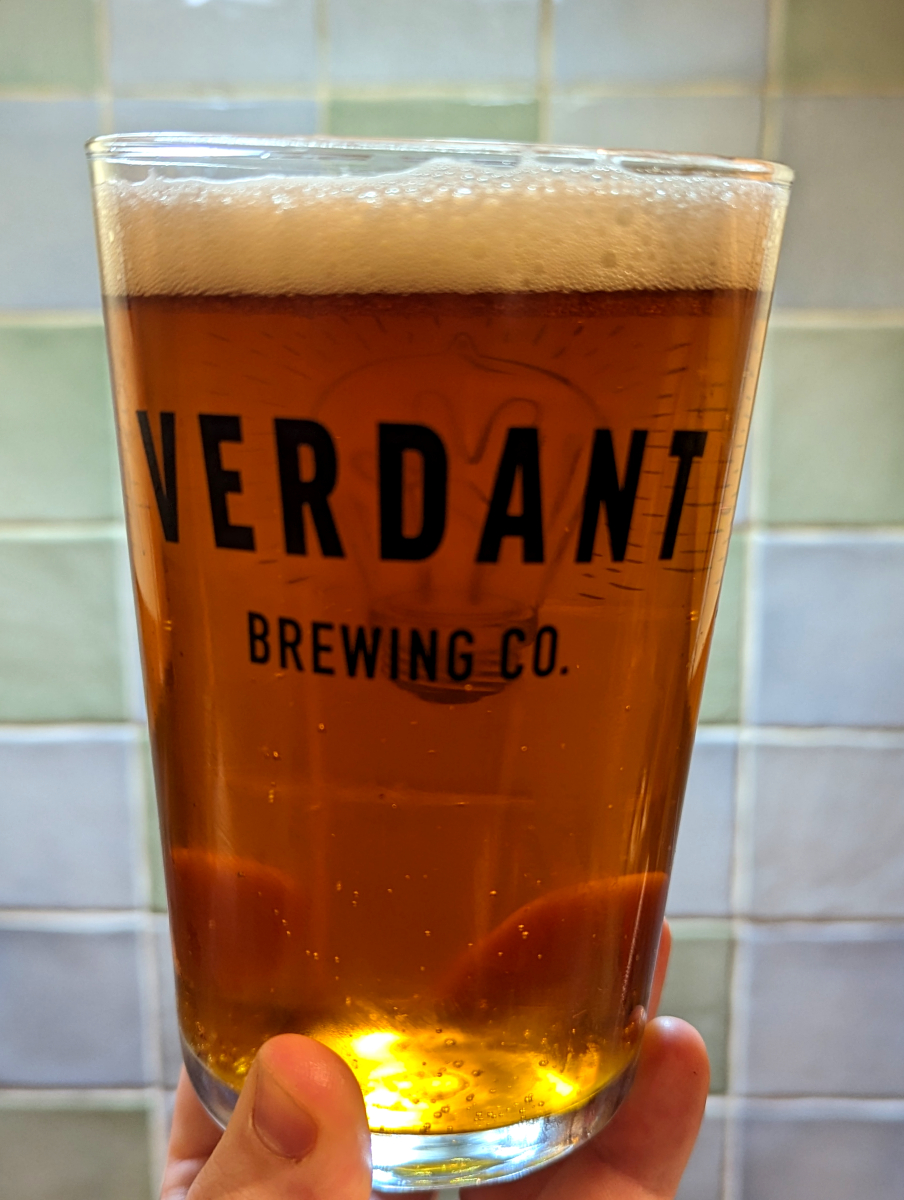- Joined
- Feb 16, 2012
- Messages
- 3,356
- Reaction score
- 4,230
- Location
- Either in the brewery or on the road
Perhaps the last full pour from my first Ballantine IPA clone attempt, gone fairly bright...
Cheers!

Perhaps the last full pour from my first Ballantine IPA clone attempt, gone fairly bright...
Cheers!
Old, I know. This is appropos to something I'm working on, so felt it might be worth revisiting.Like most tall tales it's elements of truth spun into fantasy. As far as I recall, more accurately plenty of Porter went to India, and that was mostly what the rank and file soldiers drank. Around the same time came the advances in malting technology that allowed for the production of pale malt (and thus pale beer). But if I recall correctly it was rarer and more expensive that the previously existing all-brown malt beers of the day, and ended up being the more upper class beer. But officers who'd gotten a taste for Pale Ale wanted that shipped to India as well, and THAT is how IPA was born. However was little to no (emphasis on no) functional overarching difference between Pale Ale and IPA. One brewery's Pale Ale would be stronger and hoppier than the next's IPA. And then a few month later they could take exact same Pale Ale and start calling it an IPA (or vice versa).
And of course, we can't forget that all beers of the day were ludicrously hopped by modern standards. Browse through Shut Up About Barclay Perkins (or one of Ron's books) and you'll be blown away how much hop was going in beers, whether they were going to India or not.
Care should be taken with the quantity of hops used. I reduce the original quantities, to take into account the age of the hops. But it’s all very much guesswork. When the hops were kept in a cold store, I don't reduce the quantities by as much.
It's not just a sensory threshold. There is also the saturation point of iso-alpha acids which is around 110.I read on a Courage thread, I think, that there is a sensory threshold for IBU bitterness that tops out at about 100 or so.
Right, but the guesswork, I think, is to try and capture their original bitterness - reducing only enough to try and account for the aging - nothing to do with v. modern sensibility, I think. And, more what I'm after is trying to make a Victorian beer, and there's the rub - whether they just really liked massively bitter beers, that our palate is just radically different. Ultimately you're right - if nothing else some simple two row. Thanks."... very much guesswork..."
I seem to recall reading that adding more hops has diminishing returns, to the point where IBUs above 100 are more numerical than real. Perhaps this is the "sensory threshold" you mention.
You seem torn between best effort to make a historical beer and fear of making a beer you don't want to drink.
I suggest a small batch with mega hops, @Gadjobrinus.
Sorry, that was it, not a sensory threshold but a physical limit. Thanks. Was that your comment I'm thinking of?It's not just a sensory threshold. There is also the saturation point of iso-alpha acids which is around 110.
Right - but the question remains, in the absence of either - were Victorians just really into insane amounts of bitterness, or are they more in line with us, and for whatever reason, 262 IBUs isn't equivalent in perceived bitterness to what 262 IBUs would be to us today?Two possible upper limits: can't get more alpha acids into the beer 'cuz saturated, and can't experience more 'cuz, er, taste buds maxxed out.
Then there is just a whole load of hops. An almost unimaginable quantity: three quarters of a ton. For just 185 barrels. No surprise, then, that the calculated IBUs are in the impossible zone.
Two years in wood is what it deserves. Don’t let it down.
Yep, right, that's what I'm wondering. Just whether they find what to us would be like downing gentian bitters was to them a pleasurable pint.Another possibility is that it just tasted bad by our modern/current sensibilities. I travel to Southeast Asia quite a bit. There are flavors and textures there that most westerners don’t enjoy and are very popular with the locals. We might not like what they did. Some folks don’t like hazy IPAs. Go figure.
Not only that, but the extraction rate of AAs is inversely proportional to wort AA concentration. Why adding all bittering hops to the last 10 minutes works too. Difficult to predict and best determined empirically by our sophisticated taste circuitry.It's not just a sensory threshold. There is also the saturation point of iso-alpha acids which is around 110.
This.best determined empirically
...and this. Just brew it.a very good and very interesting beer. It WAS bitter. But not at all unpleasantly so. I would describe it as more "mineral" in nature rather than bitey or acidic. There was a lot of malt character, and fairly pronounced esters as one expects in an English Ale.

Looks great with a little color. My next beer is a classic WCIPA with 4.8% C40.Getting there...at least, pretty clear given the circumstances.
6 gallon batch
8oz whirlpool
4oz dry hop
Soft crashed for 2 days
Zero filtration
Zero fining
Packaged and on tap since...Sunday or Monday?

84% Czech PilsenLooks great with a little color. My next beer is a classic WCIPA with 4.8% C40.
Nice. What’s T50?84% Czech Pilsen
6% Munich II
4% Dextrose
4% English Caramalt
2% T50
1.084 OG
1.014 FG
9.2%
75 IBU
50L/130EBC British crystal.Nice. What’s T50?
Yes, with sweetened tropical fruit juice, because otherwise I can't stand it's bitterness.Someone needs a binky
I'm a bit hazy on the point being made.Yes, with sweetened tropical fruit juice, because otherwise I can't stand it's bitterness.
I see what you did there.I'm a bit hazy on the point being made.

So clear you can see all the nucleation sites!I think this has cleared as much as it's going to now.
You can, I didn't really clock that when I took.the picture but it does look rather weird!So clear you can see all the nucleation sites!
The hazy fanboys have to work at messing things up.

Perhaps you should read the introductory paragraph to the IPA section in the BJCP guidelines.I can’t stand IPA’s. It’s a millennial fad that’s going away thank god !
The process was done that way back in the days for preservation purposes.
Just for the record, Hazy is not an IPA or an American Pale Ale.This thread is 5 years old, the hazy style has persisted for what, 10 years now? American IPA since the 1990s. It does seem to be going away rather slowly. Always been useful for a good rant though.
Enter your email address to join: